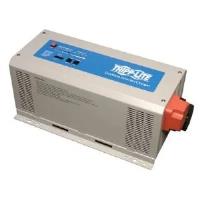 Add My Company
Add My Company
Sign In

The SWL series is an improved NPL design with a greater energy-to-density ratio and up to 40% more discharge capacity. All other traits and attributes are the same, allowing customers of both products to benefit from a similar mechanical and electrical design.
A “long life” is defined as a period of 10 to 12 years.
Performance at high discharge rates A VRLA (Variable Rate Lead Acid) battery is a type of lead-acid battery that has a variable rate of discharge.
• IEC60896-21+22 compliance
• UL94:V0 FR Case (Optional)
• The Absorbed Glass Mat is made without the use of any free acid.
• Gaseous recombination
• The vast majority of types are produced in the United Kingdom.
• The recovery from a deep discharge went smoothly.
• Any orientation is permissible (excluding continuous inverted use).
A valve-regulated lead–acid (VRLA) battery, also known as a sealed lead–acid (SWL) battery, is a lead–acid battery with a limited amount of electrolyte (“starved”) absorbed in a plate separator or formed into a gel, a proportioning of the negative and positive plates to facilitate oxygen recombination within the cell, and the presence of a relief valve that retains the battery contents regardless of position.
VRLA batteries are divided into two categories: absorbent glass mat (AGM) and gel cell (gel battery). Silica dust is added to the electrolyte by gel cells, resulting in a thick, putty-like gel. AGM (absorbent glass mat) batteries include a fibreglass mesh between the plates that helps keep the electrolyte in place while also separating the plates. When compared to flooded vented lead–acid (VLA) batteries or each other, both types of VRLA batteries have benefits and limitations.
The gel cell and AGM types of VRLA may be deployed in any orientation and do not require continuous maintenance due to their construction. Because VRLA batteries must be cleaned and tested on a regular basis, the label “maintenance free” is deceptive. They’re common in big portable electrical devices, off-grid power systems, and other applications that require a lot of storage at a lower cost than low-maintenance technologies like lithium ion.
Storage
Keep the batteries covered and stored somewhere cool, clean, and dry if they aren’t going to be used straight away.
A supplemental charge will be required prior to installation if the batteries will be kept for longer than six months, as described in Section 3.
Unpacking and inspection
Batteries are constantly electrically live, which is a danger. Make sure the battery terminals aren’t severed. There is a risk of fire, explosion, or burning. This product should not be dismantled and should not be heated or burnt over 60 degrees.
On the battery shipment, look for obvious signs of transit damage. Make sure that the consignment includes all of the items listed on the advisory letter or invoice, such as batteries, cables, and shrouds. Unpack each battery carefully, taking care not to damage the terminals. Each battery should be inspected for physical deterioration, such as cracks in the shell or terminals.
The battery’s open circuit terminals should have a voltage greater than 2.1 volts per cell (12.6 volts for a 6 cell battery). Any low-charge batteries must be charged before they may be placed.
Pre-installation Check List
Batteries with built-in handles should not be hung from them. The handles are designed to facilitate manual handling of the batteries during installation, not to suspend the batteries permanently.
DANGER: Batteries are electrically live at all times. Do not shorten the battery ternals.
Under any circumstances, batteries should not be charged in a sealed container.
The UPS batteries should be stored in a dry, well-ventilated area with temperatures ranging from 20 to 25 degrees Celsius.
Caution
If the operating temperature surpasses 25°C, the battery’s service life will be significantly decreased (see Table in Section 5.1 Installation and Connection). Remove any oxidation coatings from the battery connections using a wire brush. It is not necessary to use an oxidising lubricant (such as Vaseline). On the other hand, corrosive compounds or elements may be present near or in the environment in some locations. It is advised that you use a non-oxidizing grease in these situations.
An insulated spanner must be used when connecting connections to battery terminals.
Remove all jewellery and watches before fitting the batteries. Free air space between each battery must be given while connecting the batteries. The optimal distance is ten millimetres.
A battery should be kept away from any spark-producing equipment since it might generate harmful vapours. The battery box should not be subjected to organic solvents or adhesives because it is made of ABS plastic. Single-string battery connection. When utilising a high number of batteries, connect them as follows.
IN CONCLUSION
• Connect the positive terminal (+) of battery No. 1 to the positive terminal (+) of the charger/load with a secure connection.
• Cell-to-cell connections
• Connect the negative (-) terminal of battery number one to the positive (+) terminal of battery number two.
• Repeat this for each battery in turn until the entire string is connected. It is important to note that the length of the inter-cell connections may vary based on the battery rack or cubicle configuration.
• TERMINAL NEGATIVE
• Connect the final battery’s negative terminal (-) to the charger or load’s negative terminal (-). (-).
• Battery Connection with Multiple Strings
• Each of the various strings in this sort of battery system should be connected using the approach outlined in Sections 4.1 and 4.2.
Use a battery breaker or isolator switch to connect the positive termination cables.
TENSILE VALUES OF TERMINAL NUTS AND BOLTS The table below shows the torque values for terminal nuts and bolts.
In the United Kingdom, this British Standard implements EN IEC 62485-2:2018. It is equivalent to IEC 62485-2:2010. It is intended to supersede the outmoded BS EN 50272:2001 standard. The UK was invited to participate in the formation of Technical Committee PEL/21, “Secondary cells and batteries.” The secretary of the committee can offer a list of the organisations represented on the committee. There is no assurance that this book will include all of the relevant contract clauses. It is the users’ obligation to ensure that it is utilised appropriately.
For more information on Product Tech Monday: Yuasa Battery Ranges And Improvements talk to Critical Power Supplies Ltd
Enquire Now
List your company on FindTheNeedle.

